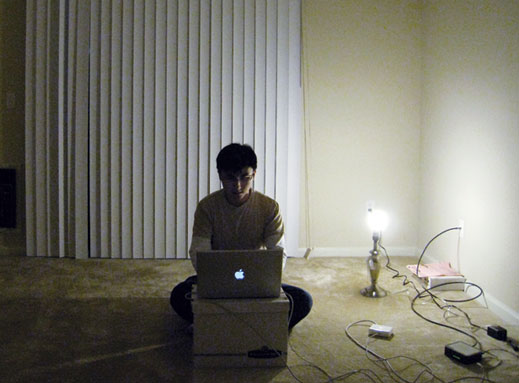Like many kids fascinated by science and technology, I grew up reading articles and watching documentaries about cutting-edge research. The way research was presented in popular media made results seem so clear-cut and pristine, as though brilliant individuals willed creative ideas into existence. However, reality is far messier: when I started working in computer science labs a decade ago as an MIT sophomore, I learned that the process of producing research involves thousands of hours of unglamorous work.

Young researchers are often frustrated when they spend years on mundane tasks while their supervisors appear to be doing the true creative work and get all the credit in publications such as MIT Technology Review. A cynical view is that professors are just exploiting the low-cost labor of students and postdocs. While exploitation does sometimes occur, in reality such grunt work is an unavoidable step in the process of training young researchers to become capable of formulating and implementing substantive ideas. From my own undergraduate and PhD research experiences, I discovered three ways in which seemingly menial work can, paradoxically, lead to creative innovation.
Expanding mental frontiers. As a student, I worked for almost 20,000 hours in various computer science research labs. Most of that time was spent on tasks such as installing ill-documented software, writing and debugging prototype computer programs, and running, tuning, and interpreting the results of computational experiments. Although not all of this was creative or “research-worthy,” the technical expertise I gained progressively expanded the range of ideas that my mind was able to generate.
Specifically, the grunt work that I did during my UROP and master’s thesis projects at MIT honed my skills in arcane, low-level programming using the C language on Linux-based operating systems. Fast-forward five years: for my PhD dissertation, I leveraged this expertise to build several new software tools that alleviated common struggles faced by modern computational scientists—organizing notes and data, making scripts run efficiently and reliably, and reproducing the results of computer-based experiments. Although other scientists recognized these same problems, they were unable to solve them because they lacked my specific expertise in C and Linux programming. My know-how put me in a unique position to see a bit beyond the state of the art.
Developing emotional fortitude. Creative ideas are meaningless without great execution. Multiple people often come up with the same idea independently, so the one who can execute most effectively will end up with the best result. Effective execution requires a tremendous amount of grit—sustained perseverance and resilience through setbacks. One way to develop such grit is through thousands of hours of grunt work.
The emotional fortitude that comes from intense grinding makes one unafraid of the technical hurdles that inevitably arise on the path to innovation. My PhD advisor fondly described one of my lab mates (now a computer science professor at Columbia University) as possessing a nearly infinite pain threshold. My lab mate was willing to keep bashing into brick walls—daunting research problems in operating-system reliability—until they crumbled before him. As his competitors succumbed to agonizing technical difficulties, he persevered and produced award-winning results for his dissertation. I doubt he was born with such steely determination, though. Before he could lead his own initiatives, his iron will was probably forged through rigorous undergraduate training at Tsinghua University (the “MIT of China”) and his work on our advisor’s labor-intensive projects.
Accumulating social capital. Finally, grunt work can earn respect from senior colleagues. If junior lab members establish reputations for executing and finishing projects, their superiors often reward them with professional connections and recommendation letters. For example, I spent a large part of my sophomore year implementing my UROP supervisor’s ideas—porting a suite of educational games to (now-antiquated) Palm PDA mobile devices. Almost a decade later, he generously provided vital personal introductions and endorsements that helped get me into institutions where my creativity could flourish.
Although grunt work is a prerequisite for innovation, the most successful creative individuals are also perceptive and self-reflective, always making the effort to seek guidance, develop good instincts, and assert their will at the right moments. Few ever achieve greatness by blindly grinding away like beasts.
Philip Guo ’05, MNG ’06, who received his PhD from Stanford, is the author of The PhD Grind, available free online at phdgrind.com.
Keep Reading
Most Popular
Large language models can do jaw-dropping things. But nobody knows exactly why.
And that's a problem. Figuring it out is one of the biggest scientific puzzles of our time and a crucial step towards controlling more powerful future models.
The problem with plug-in hybrids? Their drivers.
Plug-in hybrids are often sold as a transition to EVs, but new data from Europe shows we’re still underestimating the emissions they produce.
Google DeepMind’s new generative model makes Super Mario–like games from scratch
Genie learns how to control games by watching hours and hours of video. It could help train next-gen robots too.
How scientists traced a mysterious covid case back to six toilets
When wastewater surveillance turns into a hunt for a single infected individual, the ethics get tricky.
Stay connected
Get the latest updates from
MIT Technology Review
Discover special offers, top stories, upcoming events, and more.